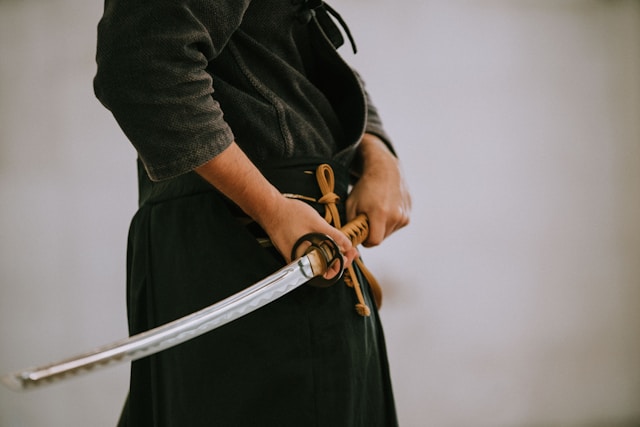Swords have always captured the imagination of fans across generations. Whether in anime or cinema, these weapons often become more than just tools for battle—they evolve into symbols of identity, power, and philosophy. Two such legendary blades are the Zangetsu Sword from Bleach and the Kill Bill Sword (crafted by the fictional master swordsmith Hattori Hanzō). Though originating from vastly different storytelling mediums—anime and Hollywood film—they both leave an indelible mark on pop culture.
In this article, we explore the origins, symbolism, and cultural impact of both the Zangetsu Sword and the Kill Bill Sword, comparing what makes them so unforgettable.
The Zangetsu Sword: Power Embodied in a Zanpakutō
The Zangetsu Sword is wielded by Ichigo Kurosaki, the main protagonist in Tite Kubo’s manga and anime series Bleach. This sword isn’t just a weapon—it’s a manifestation of Ichigo’s very soul. Known as a Zanpakutō, Zangetsu evolves as Ichigo grows stronger and more self-aware. Its name, which roughly translates to “Slaying Moon,” hints at its ethereal and formidable nature.
At its core, the Zangetsu Sword reflects Ichigo’s internal struggle. Early in the series, the blade appears in its Shikai form—a massive, cleaver-like black blade that lacks a guard or sheath. It’s raw, heavy, and unwieldy, yet incredibly powerful, much like Ichigo himself at the beginning of his journey. Over time, as Ichigo learns more about his heritage—part Soul Reaper, part Quincy—the Zangetsu evolves to reflect those complexities. In its Bankai form, TensaZangetsu, the sword becomes sleeker and faster, emphasizing Ichigo’s growth in speed and control.
What makes the Zangetsu Sword iconic isn’t just its look or power; it’s the story it tells. It’s an ever-changing mirror of Ichigo’s spirit. Fans resonate with it because it’s not static—it changes as he does.
The Kill Bill Sword: A Blade Forged for Vengeance
On the other end of the spectrum is the Kill Bill Sword, also known as the Hattori Hanzō sword. Featured in Quentin Tarantino’s Kill Bill film series, this sword is wielded by Beatrix Kiddo, a.k.a. “The Bride,” played by Uma Thurman. Unlike Zangetsu, which is born of spiritual energy, the Kill Bill Sword is a product of steel, fire, and the craftsmanship of a legendary swordsmith.
In Kill Bill: Volume 1, Beatrix seeks out Hattori Hanzō, who has retired from forging blades. She persuades him to come out of retirement to craft a sword worthy of her mission: revenge against her former allies and her ex-lover, Bill. The Kill Bill Sword is not just a weapon—it’s a sacred object. Hanzō even states that it is the finest sword he has ever made, and it is capable of cutting through anything, even other swords.
Much like the Zangetsu Sword, the Kill Bill Sword is more than its physical form. It symbolizes Beatrix’s transformation from victim to warrior. Her journey of vengeance and redemption is intertwined with the weapon, making every battle scene emotionally charged.
Design and Aesthetics: East Meets West
Visually, the Zangetsu Sword and the Kill Bill Sword differ greatly, each reflective of its origin. Zangetsu, especially in its Shikai form, abandons the traditional katana design in favor of a rugged, oversized cleaver. It exudes raw power and unpredictability. TensaZangetsu, on the other hand, becomes a sleek black katana, minimalistic yet elegant, emphasizing precision and speed.
The Kill Bill Sword embraces traditional Japanese katana aesthetics—curved blade, a wrapped hilt, and a sheath adorned with kanji. It’s clean, precise, and beautiful, a contrast to the bloody violence it often brings. Its elegance contrasts sharply with the gritty underworld of assassins in which it’s used.
Both swords reflect the duality of their users: Ichigo’s struggle between chaos and control, and Beatrix’s balance between motherly tenderness and ruthless vengeance.
Cultural Impact and Fan Following
The Zangetsu Sword has become one of the most recognized weapons in anime culture. Cosplayers, action figure collectors, and martial arts enthusiasts admire its evolving design and the rich narrative behind it. With Bleach seeing a resurgence thanks to its “Thousand-Year Blood War” arc, the Zangetsu Sword is more relevant than ever.
Meanwhile, the Kill Bill Sword has carved a niche in cinematic history. Quentin Tarantino’s stylized homage to samurai films and spaghetti westerns introduced a new generation to the beauty and lethality of katana swords. The image of The Bride wielding her Hattori Hanzō sword in her iconic yellow jumpsuit has become emblematic of female empowerment and revenge thrillers.
These swords have moved beyond fiction. They’ve inspired merchandise, replicas, and even martial arts schools that use them as teaching tools. Whether in anime conventions or film festivals, the Zangetsu Sword and Kill Bill Sword are celebrated as symbols of resilience and strength.
Symbolism and Philosophy
What makes these swords particularly compelling is the philosophy behind them.
The Zangetsu Sword represents personal growth, duality, and self-acceptance. Its changing form mirrors Ichigo’s internal battles. Every slash is an expression of his evolving identity. Zangetsu teaches us that strength is not just physical; it’s mental, emotionala, and spiritual.
The Kill Bill Sword embodies justice and revenge. It is a blade forged for a singular purpose—to restore balance and punish betrayal. It raises ethical questions: Does the end justify the means? Can vengeance bring peace? The sword itself remains silent, but through Beatrix’s journey, we confront these moral dilemmas.
Final Thoughts
Though the Zangetsu Sword and the Kill Bill Sword originate from different universes, their cultural weight is undeniable. They’re not just props or weapons—they are storytellers in steel. Each blade carries with it a legacy of pain, growth, and resolution.
In a world fascinated by heroes and antiheroes, the Zangetsu Sword and Kill Bill Sword serve as reminders that every battle fought with a blade begins within. Whether you’re an anime fan drawn to Ichigo’s spiritual journey or a film buff who admires The Bride’s unrelenting pursuit of justice, these swords continue to inspire, captivate, and provoke thought.
